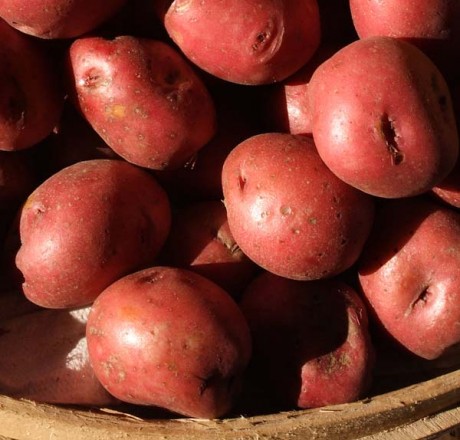Potato planting time
Plus garden to do's for February
By L.A. JacksonThe middle of February through April 1 is prime Irish potato planting time. You might be tempted to try potatoes from the grocery store to start a spud patch, but they are usually sprayed with sprout inhibitors. Use certified growing "seed" potatoes instead — they will readily sprout and are disease resistant.
There are many potato varieties, but 'Superior', 'Yukon Gold', 'Red Pontiac' and 'Kennebec' are some of the best, most widely available in our region.
Potatoes prefer a well-draining, sunny location in soil mixed with plenty of organic matter. A sprinkling of a low-nitrogen fertilizer such as 5-10-10 is a good nutrient package to add to the growing site, with another light application five to six weeks after planting.
If the soil's pH is neutral or slightly alkaline, a disease called "scab" could result. This ailment causes brown, rough tissue on potatoes. However, mixing in lots of compost, which is acidic, I have rarely seen scab crawl into my 'tater patch.
Cut the seed potatoes into chunks that are about 2 inches square and have at least two "eyes." These "seeds" should then be placed in a cool, dry area for a day or two before planting to allow the cuts to cure, which helps prevent rot.
For an easy patch in a small home garden, plant potatoes cut ends down a foot apart and an inch or two deep in prepared ground. Next, scatter a 6-inch layer of straw over the bed, water, and wait. When the plants emerge from the straw, let them grow for a week or two, and then add more straw to the pile, leaving the tips of the plants exposed to the sun. The final straw pile should be 12 to 15 inches in height. This method not only produces cleaner potatoes, but, in my opinion, more spuds than standard deep-ground planting.
Three to four months after planting is harvest time. Stick your hand in the straw and go on a spud hunt. If all has gone well, your efforts will be rewarded with between 15 to 30 pounds of potatoes per 10 feet of row!
Garden To Do's
February
- If you are preparing new beds for springtime and have been bothered with moles or voles in the past, mix in liberal amounts of pea gravel to make the ground inhospitable to these furry dirt-diggers.
- Make sure your motorized garden tools can rev up properly this spring by removing any gas that might be left over from last summer. Gasoline can lose its pop over time and gum up carburetors, leading to repair work at the wrong time of year.
- Cool-season grasses such as fescue and bluegrass should be given an application of nitrogen about the middle of this month at the rate of one pound per 1,000 square feet of lawn.
- Ornamental grasses can be pruned now to get them ready for spring. In addition, overcrowded clumps can be divided and replanted.
- When watering indoor plants this winter, fill a container with tap water and allow it to warm to room temperature before pouring on cold-sensitive plants.
- Watch for spider mites, aphids and mealy bugs on house plants this winter. Warm, dry air inside houses encourages these pests to come out and play in a bad way!
- You are filling the bird bath with fresh water each week, aren't you?
-
Share this story:




Comments (1)
Andy Richmond |
June 21, 2021 |
reply